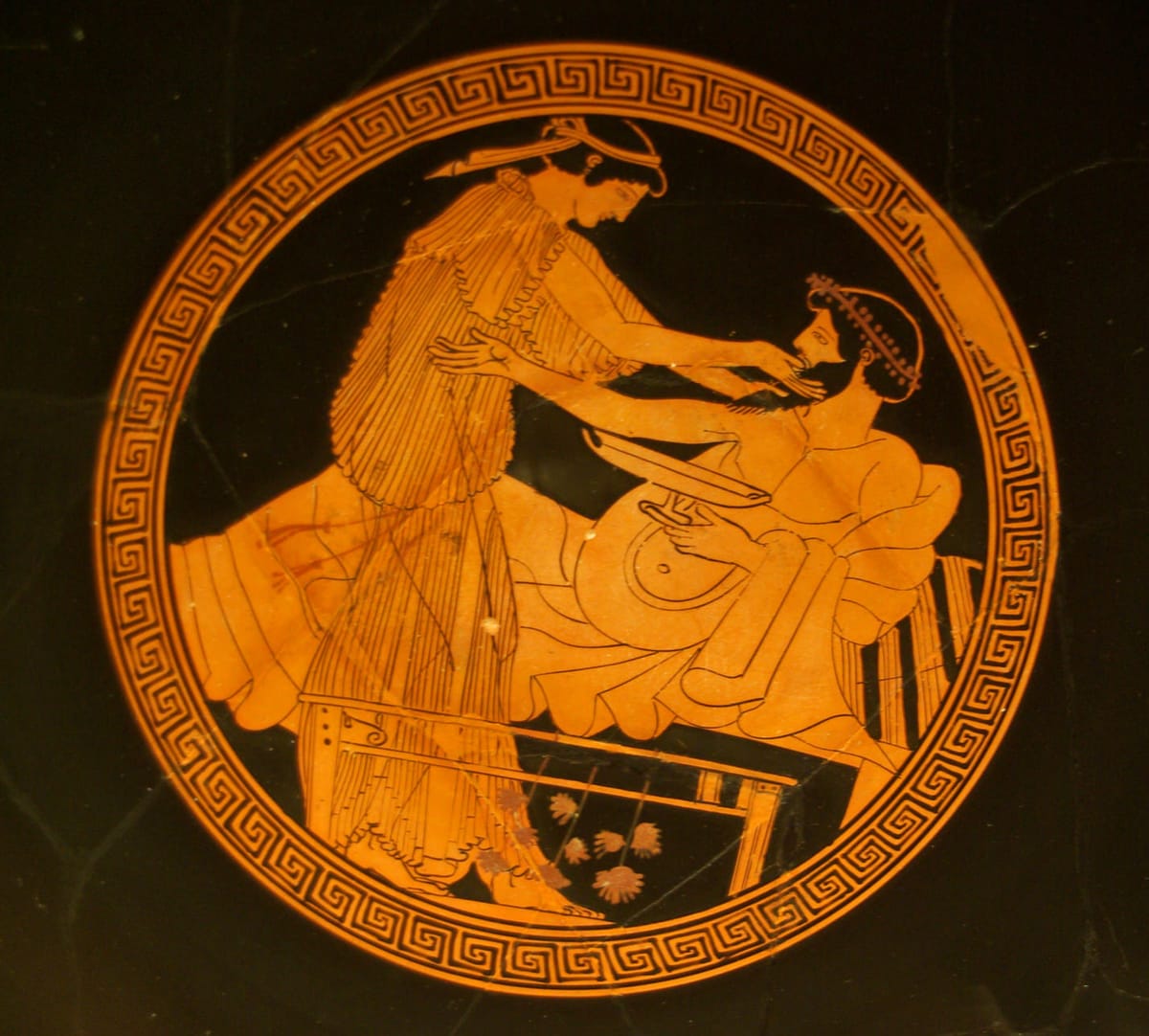Love and gender through history

Throughout history, societies have grappled with issues of diversity, identity, and love, much as we do today. While our modern governments and social structures are often seen as entirely different from those of ancient civilizations, a closer look at the ways that the Greeks, Romans, Aboriginal cultures, and early modern European societies approached concepts like cross-gender love, diversity, and the fluidity of relationships reveals a striking continuity. Despite the many cultural, technological, and political evolutions that have occurred over the centuries, these ancient and historical societies' attitudes and practices still resonate in our modern world—inspiring, reminding, and cautioning us as we navigate our own evolving social norms.
Aboriginal Gender Systems: A Tradition of Inclusion
Among Indigenous cultures, particularly in Australia, we find deeply rooted traditions of gender diversity and equality. Many Aboriginal communities have long recognized the existence of more than two genders, emphasizing roles that go beyond the binary classifications of male and female.
For example, in some Aboriginal cultures, such as the Yolngu and Tiwi people, individuals who embody both masculine and feminine qualities are known as "sistergirls" and "brotherboys." These terms reflect gender identities that go beyond the Western binary system and have been acknowledged and respected within their communities for centuries. These identities are not only recognized but often celebrated, as these individuals hold unique cultural and spiritual roles within their societies. This emphasis on inclusion and the recognition of diverse gender roles serves as a powerful reminder that many cultures have long understood the importance of respecting and valuing all members of the community, regardless of gender.
The resilience of these Aboriginal gender systems is particularly significant in today's world, as modern societies strive to create inclusive spaces for non-binary and gender-diverse individuals. The recognition of non-binary or third-gender categories and the push for legal rights for non-binary people reflect an ongoing journey toward equality—one that Indigenous cultures have been navigating for generations. By understanding and learning from these longstanding traditions, modern societies can work toward a more inclusive future that honors the richness of human identity.
Ancient Greece: Celebrating Love Beyond Gender
The ancient Greeks are known for their rich culture, marked by art, philosophy, and an advanced understanding of human emotions. Importantly, Greek society exhibited a remarkable acceptance of love that transcended traditional gender roles. The relationships between men, especially those between an older mentor (erastes) and a younger protégé (eromenos), were celebrated as a deep bond of emotional and intellectual connection. Though these relationships were not seen in the same light as marriage, they played a significant role in Greek society—highlighting how they viewed love, not just in reproductive terms, but also as an essential element of personal growth and camaraderie.
This aspect of Greek culture can be seen as an early acknowledgment of the diversity inherent in human affection. In today’s society, where movements for LGBTQ+ rights have gained substantial ground, the Greeks' acceptance of same-sex or non-binary relationships resonates as a reminder of our shared humanity—a timeless acknowledgment that love and companionship come in many forms. Modern-day policies promoting same-sex marriage and the celebration of Pride movements can be seen as echoes of these early understandings of diverse love, evolving from the values that were cultivated thousands of years ago.
Ancient Rome: Diverse Identities and Practical Love
Moving forward to Rome, the empire's social structures and values offer an intriguing lens through which to view diversity and relationships. Romans were practical in their approach to many aspects of life, and love was no exception. While Roman marriage was often based on political and familial alliances rather than romance, the Romans also allowed space for extramarital relationships, including those between same-sex partners. This acceptance wasn't without its complexities, as Roman social norms varied considerably between classes and genders, but it still reflected a flexible understanding of human desires and identity.
The Romans, in their sprawling multicultural empire, also encountered and integrated people from vastly different backgrounds. This diverse tapestry necessitated a certain openness to different customs and practices, including those related to love and relationships. Today, we see echoes of this flexibility in multicultural cities, where different traditions and approaches to love coexist and enrich the fabric of society. The ancient Roman experience reminds us of the power—and the challenges—of diversity in any thriving society, highlighting the need for empathy and openness.
Europe in the 1600s and 1700s: The Era of Sexual Liberation
During the 1600s and 1700s, Europe underwent significant cultural shifts that influenced attitudes toward love, sexuality, and relationships. The courts of France, under the reigns of Louis XIV and Louis XV, became known for their decadence and a degree of sexual freedom that shocked more conservative contemporaries. The aristocracy engaged in elaborate social games that often blurred the lines of traditional relationships. Affairs were common, and sexual freedom was exercised as part of the cultural expression of power and privilege. The French courts, with their libertine values, illustrated a break from strictly religious views on sexuality and laid the foundation for more liberal attitudes toward relationships.
Meanwhile, in Russia, under the leadership of Peter the Great, Peter III, and Catherine the Great, the rigid social norms of earlier times began to loosen. Peter the Great was known for his attempts to modernize Russian society, borrowing ideas from Western Europe, including a more open attitude toward relationships. Catherine the Great, in particular, was known for her progressive views on love and sexuality. She maintained several high-profile relationships outside of marriage and used her position to challenge traditional gender norms. Her court was a place where intellectual and romantic pursuits were celebrated, and this era marked the beginning of a slow but meaningful shift toward greater personal freedom in relationships.
These changes in Europe during the 1600s and 1700s highlight an evolving understanding of love, power, and personal freedom. The sexual liberation of the French and Russian courts mirrored, in some ways, the flexibility seen in ancient Rome, where practical concerns often guided relationships, but love and companionship were still valued. This era reminds us that the pursuit of personal freedom and the challenge of societal norms are recurring themes throughout history.
Modern Parallels: Evolving Beyond Boundaries
In many ways, our current societal landscape is a continuation of the struggles and triumphs of ancient civilizations and early modern societies in navigating identity, love, and inclusion. Just as the Greeks celebrated emotional bonds, the Romans managed the complexities of diversity, Aboriginal cultures embraced gender fluidity, and early modern European courts experimented with sexual liberation, we find ourselves working toward a society that values individuals regardless of whom they love or where they come from. The legal recognition of same-sex marriages, advocacy for diverse family structures, and a focus on inclusion in public life all demonstrate a progression—albeit with challenges—toward broader acceptance.
Ancient lessons still hold significance today: the Greeks remind us to celebrate love as an enriching human experience beyond mere categorization, the Romans teach us the importance of integrating diverse identities within a larger community, Aboriginal traditions provide a model of inclusivity that respects the fluidity of gender, and the early modern European courts illustrate the desire for personal freedom in relationships. As we continue to build modern governments and communities that strive to be more inclusive, these historical perspectives provide a valuable context, underscoring that the pursuit of equality and recognition of love in its many forms is not new, but a timeless and ongoing journey.
Conclusion: Learning from the Past to Shape the Future
The lessons of Aboriginal cultures, ancient Greece, Rome, and early modern Europe demonstrate that diversity, love, and inclusion have always been part of the human experience. By examining how these societies approached relationships and identity, we can gain valuable insights into our own journey toward equality. The acceptance of diverse forms of love in ancient Greece, the integration of different identities in Rome, the enduring gender systems of Aboriginal cultures, and the quest for personal freedom in early modern Europe all highlight the importance of empathy, openness, and respect for all individuals. As we strive to create a more inclusive world, these historical perspectives remind us that our efforts are part of a broader, timeless human endeavor—one that connects us to our past and inspires us to build a better future for everyone.

